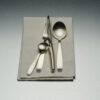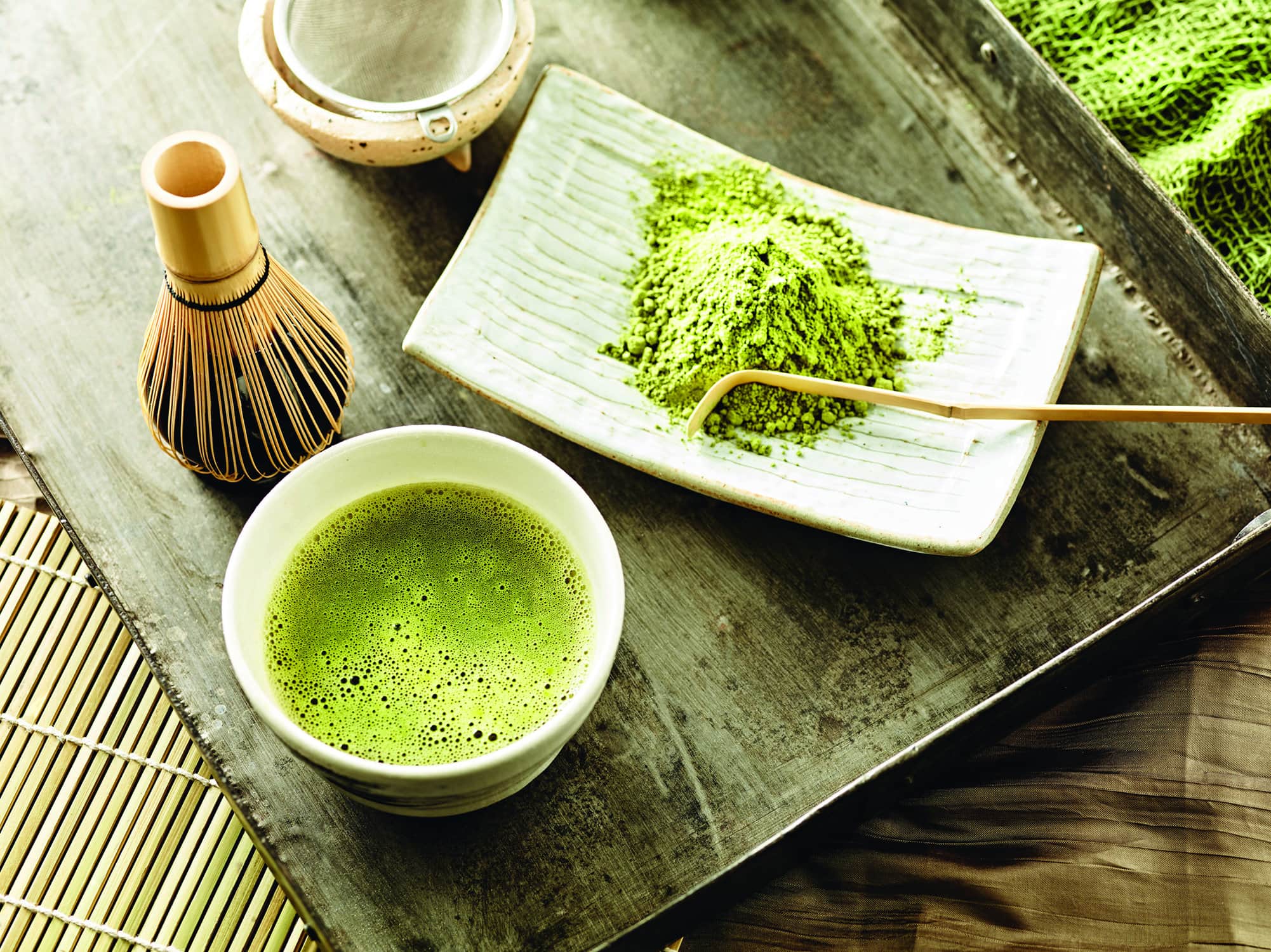Matcha, the traditional Japanese green tea, is stimulating in a natural way, gives you an unbelievable chlorophyll kick and impresses the drinker with its mild, delicate, bitter taste. The fine powder as well as exquisite tools for preparation are availabl at Demmers Teehaus.
Luminescent jade green and with a strong foam head – that is how the ideal matcha is presented to the connoisseur who is about to enjoy it. The traditional Japanese green tea made of ground, young tea leaves unfolds on the palate – a fresh, slightly bitter aroma that is intense, but also mild and slightly sweet. Matcha is different – from the plant all the way to the preparation.
The majority of the tender tencha tea plants that are processed into matcha tea grow in Japan. In order to get the incomparable matcha aroma, the tea farmers cover the plants with nets or bamboo mats four weeks before the harvest. In the artificial shade, the tea plants need more time to ripen and, at the same time, produce a larger quantity of healthy substances, like chlorophyll, vitamins A, B, C and E and other antioxidants. Then – by hand! – only the fresh green leaves at the top are harvested. After careful further processing by steaming, drying and breaking, the fine leaf tissue is separated from the leaf veins and stem. Only the most tender parts of the tea leaf end up between the granite wheels of stone mills.
Foam head
With just a few movements, a culinary delicacy is created from the fine powder that was obtained. First, you put an amount of the jade green powder that has been measured with a bamboo spoon into a tea bowl. An appropriate amount of 60- to 80-degree hot water is poured over it – 80 to 100 millilitres for one gramme of powder. Finally, the Japanese chasen, a bamboo broom, is used. Swung from the wrist in a relaxed manner, as if one wants to write a large M, it does not just distribute the powder in a pleasant, even way, but it also creates the incomparable, creamy foam that tops a real matcha.
You drink matcha in order to enjoy it. And as an aside, it also promotes health.
In order to formally carry out this tea ceremony, which has been practiced in Japan for hundreds of years, it is worth it to invest a little bit in the equipment: wide bowls, bamboo spoon, chasen and broom holder do not just decorate your kitchen, but also increase the enjoyment. Drinking a bowl of tea together with friends has completely different dimension through the ceremony.

Trendy variations
Even if the majority of the Japanese matcha harvest is consumed in Japan, the green delicacy has also delighted European palates for a number of years. In more than 30 Demmers Teehaus locations worldwide, as well as in our online shop, we currently offer four high-quality types of organic matcha: from the delicate, bitter «Energy» variety for beginners to the deep green «Tenno» and the especially mild, sweet «Yume» all the way to the premium «Ceremony,» which is from a high plantation. A matcha latte with warm, foamed milk is also fashionable at the moment. It doesn’t always have to be cows’ milk: vanilla soya milk, rice-coconut milk or oatmeal milk also harmonise with the slightly bitter matcha aroma. Demmers Teehaus also offers matcha as an iced tea – in a fruity, spicy combination with apple juice and ginger extract. For gourmets that like to cook or bake with matcha, Demmers Teehaus offers two versions of matcha: «Daily,» which is pure, and the «Ready Mix,» refined with coconut blossom sugar. Both bring a fresh green colour to macarons, cookies, ice cream and sorbets that is even preserved when it is heated. The taste harmonises with chocolate, just as it does with salad dressings. Your fantasy knows no bounds.
Drinking it in order to enjoy it
You drink matcha in order to enjoy it. And as an aside, it also promotes health. This is due to the large quantities of the aforementioned vitamins and antioxidants, because you consume the entire leaf and because of the special chemical structure of the caffeine that it contains. Because this means of stimulation is bound to flavonols in non-fermented teas and is first realised in the body in a pure form, the refreshing, stimulating effect is milder than coffee’s and also lasts longer. Your mind and body are pleasantly revived for hours, like after a swim in the fountain of youth.









